Blog
More Mail!
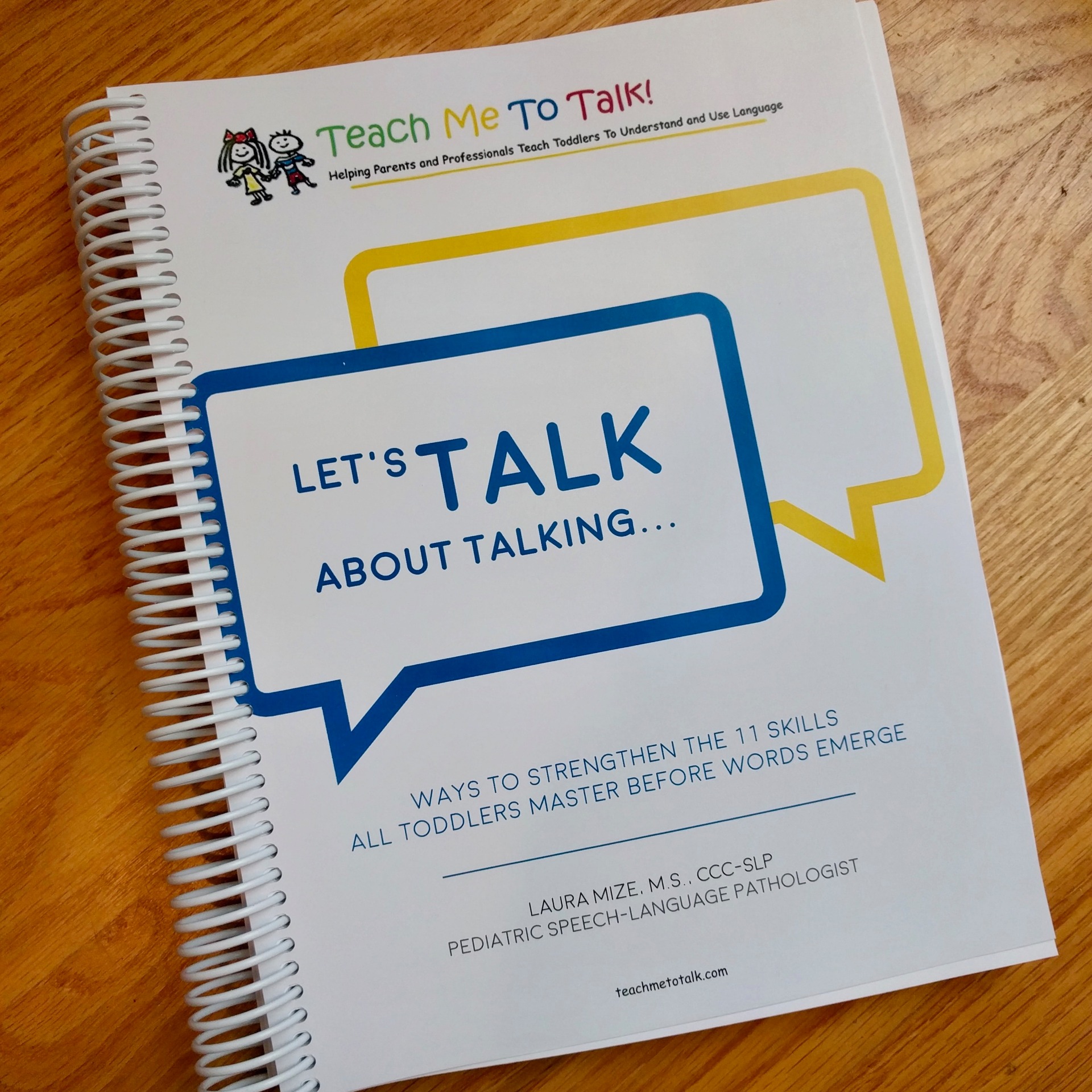
Okay so apparently I had to have *all* the Teach Me to Talk therapy manuals. So excited for this one. When Laura did her podcast series on these 11 skills I couldn't get enough and ended up making my own chart/checklist from my notes... 🤓!
My Job's Alright
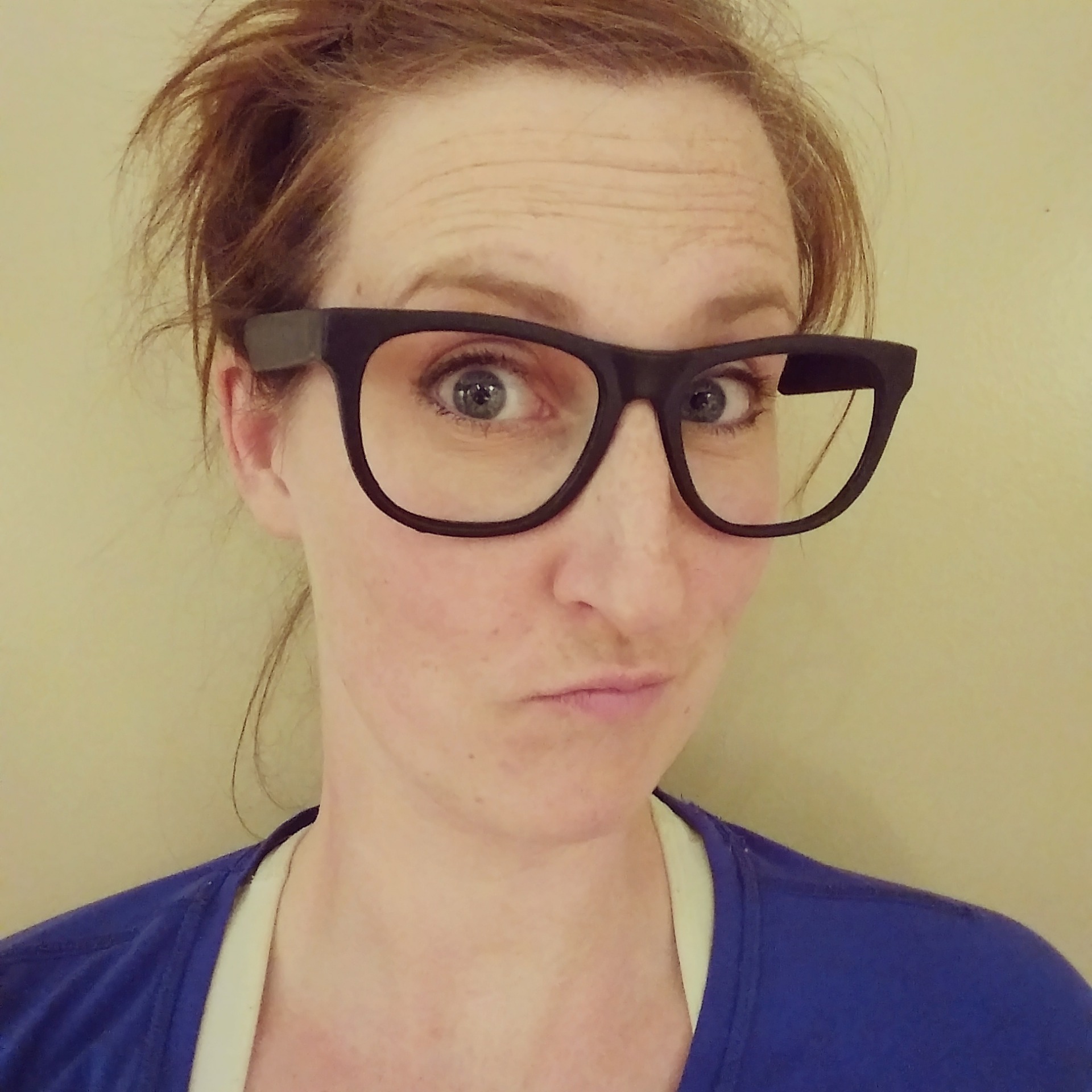
Gonna help my little 2-year-old client feel good about wearing her glasses tomorrow. Sometimes my job is pretty alright, guys.
Halloween Sights Printable
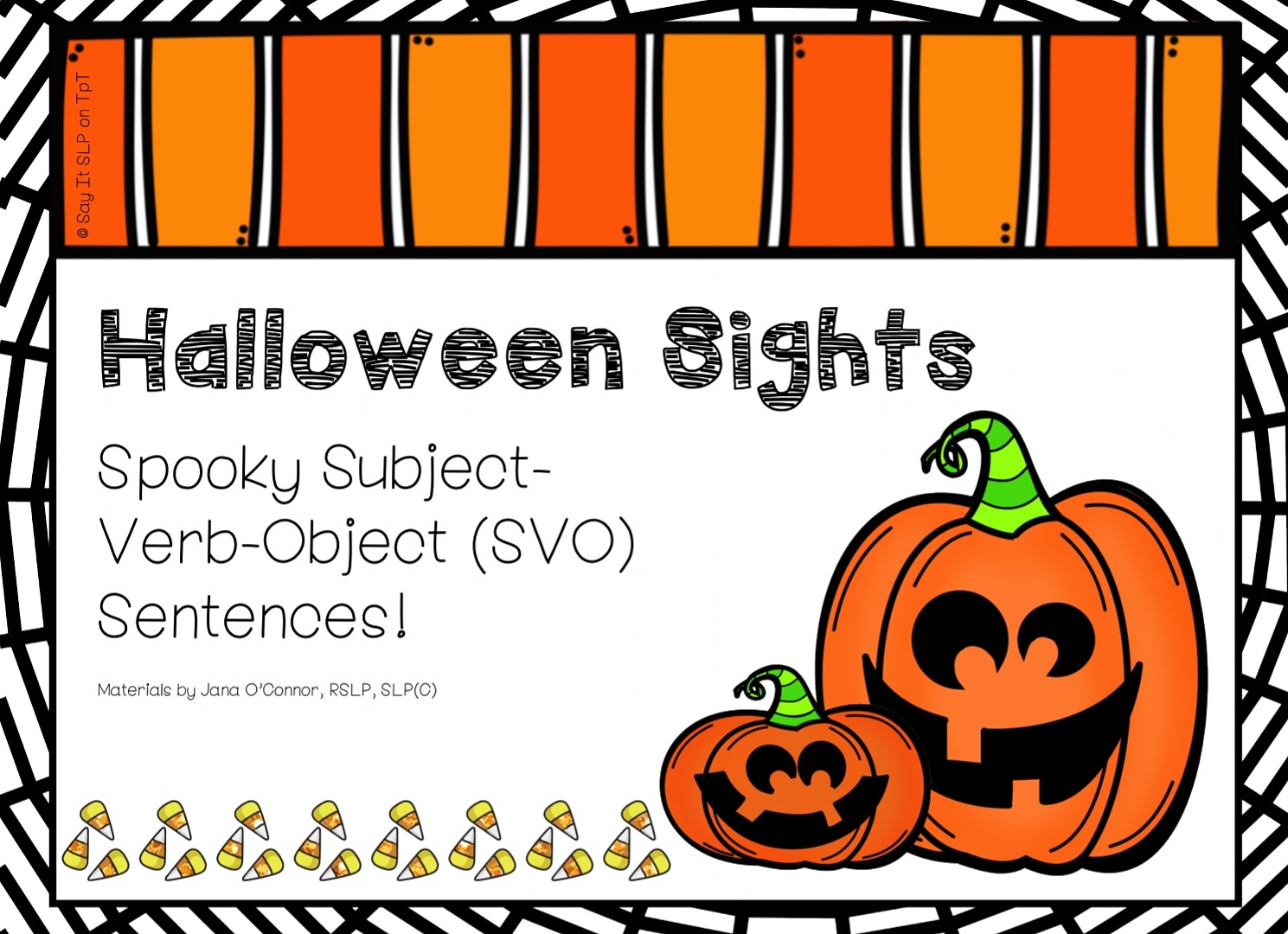
Did you know I have a TeachersPayTeachers store? I've been wanting to make some materials to share for ages and finally got this interactive SVO book posted for sale, just in time for Halloween! It has twelve story pages with the sentence format "I see ___" and your little clients can have fun matching the picture cards to each page, then reading out the sentence they've built. Picture cards come in two formats: with or without text.
Check out my TpT store here or search for Say It SLP!
Happy Thanksgiving

Happy Thanksgiving weekend, everyone! Have a lovely time and I hope you get some yummy dinner, too!
Scheduling Tetris
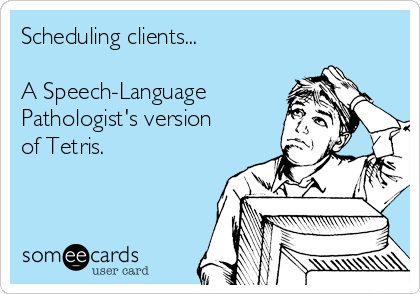
I've been quiet on the blog lately because SEPTEMBER IS COMING and it's the same every year for pretty much all pediatric therapists. Folks are starting school (or preschool, or daycare, or coming back from vacation) and this means schedules are... in flux.
I'm going to be taking a temporary pause on accepting new clients until I can work out exactly who I'm seeing and when. If you'd like an update on my availability, you are (as always) welcome to call me or email to check in.
Space Invader
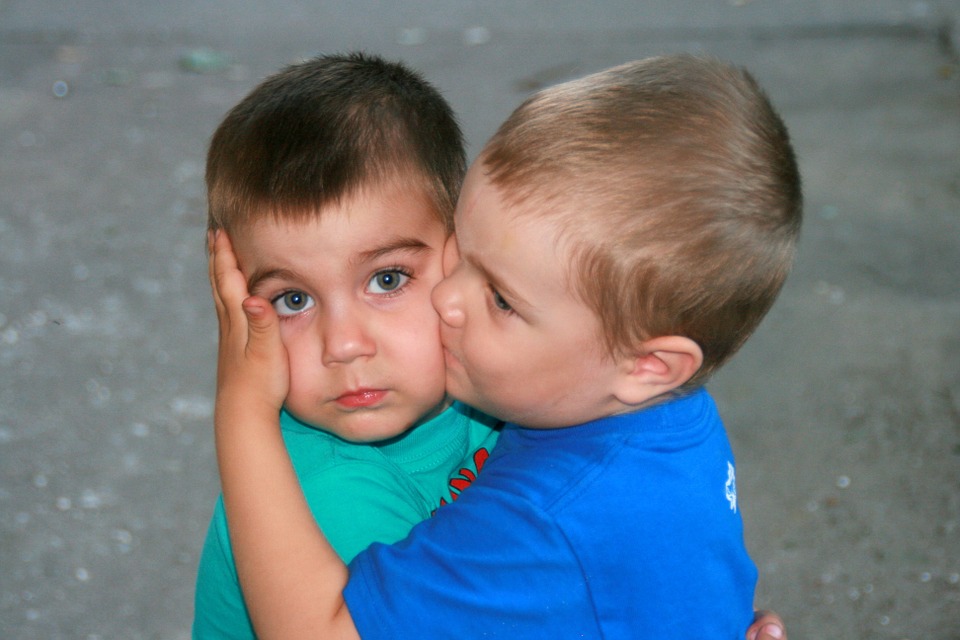
You know how many young kids love superheroes and super-villains? The SuperFlex curriculum from the folks at Social Thinking is right on point for using fun characters to teach social interaction skills. I've been so grateful that SuperFlex has been a tool used for all the children in my son's kindergarten classroom this past year. The basic concept is each of us has our own SuperFlex (flexible thinking skills) inside our brains, and we use our SuperFlex to battle the Team of Unthinkables, which include such characters as "Rock Brain" (who makes you get stuck on your ideas), "Glassman" (who has big reactions to small problems), "Space Invader" (who invades others' personal space) and "Brain Eater" (who distracts people). My son loves reading the Superflex books, and I'm pretty sure he has no idea that he's learning while enjoying them.
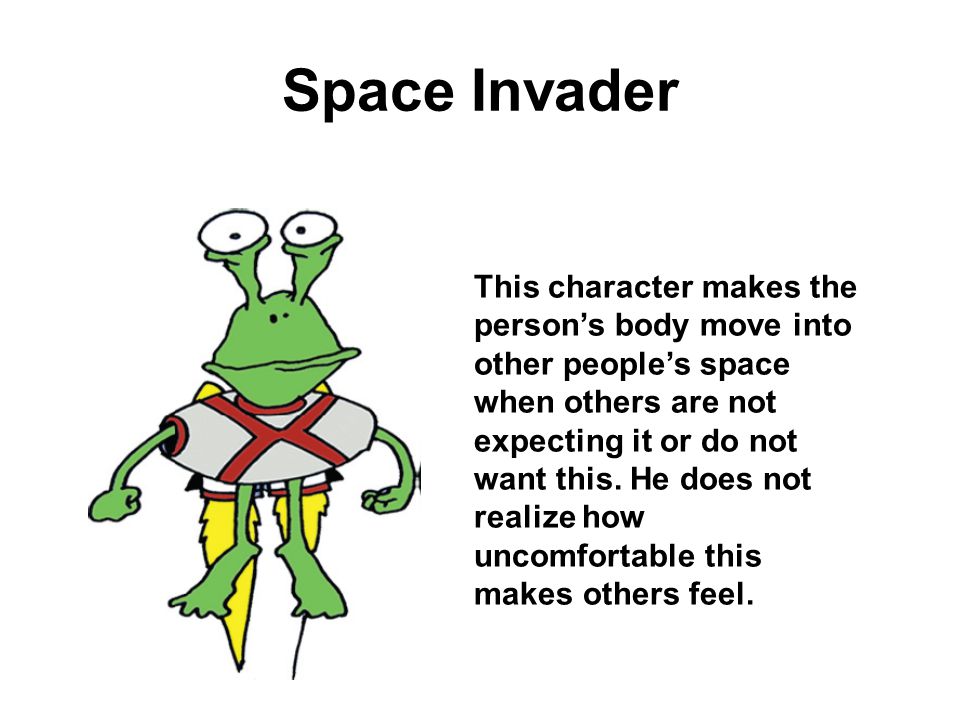
Social Thinking materials are fantastic tools for kids ages 4 and up to learn how we think about each other socially and how to behave in social situations. If your little one often has difficulty being flexible or navigating the social world, check out this fantastic resource: https://www.socialthinking.com/Products/superflex-superhero-social-thinking-curriculum
Just remember: the time to teach these concepts is when your child is calm and in a good mood - trust me that telling an upset/inflexible child that s/he has got some Rock Brain going on is a sure-fire way to make that Rock Brain problem worse.
Question Less/Comment More
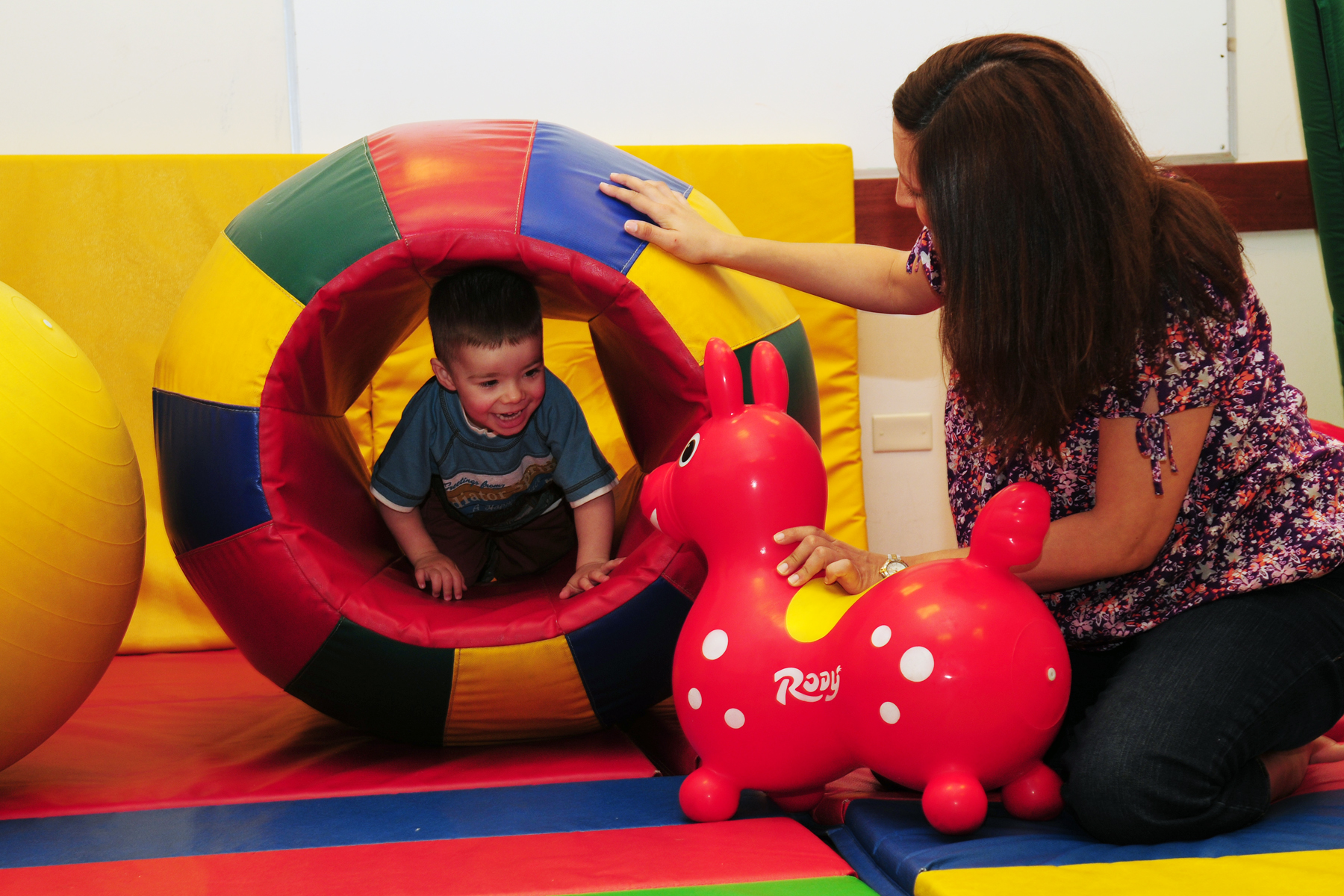
Language strategy of the day: Question less and comment more!
Parents love to ask kids questions. We love to see what our kids know, and we love to hear them talk. This is especially true of kids with delayed language development, as parents may be even more eager to hear those words AND may have even more reason to celebrate when they hear them. So it's natural to fall into the habit of asking those quizzing questions, such as "is that a dog?" or "what colour is your sock?" or "what does a duck say?" Notice that the answers to these questions are almost always (1) yes/no or (2) a one-word, known/expected answer.
But let me tell you something: kids will actually say a whole heck of a lot more than a single word at a time if we ask fewer questions and just talk to them about what's going on. If we COMMENT instead of QUESTION, kids will:
- hear richer, more diverse language input from us (a rich variety of vocabulary, grammatical words, and concepts)
- feel free to share their ideas and be creative (including taking risks and trying new words and phrases)
- have an opportunity to contribute to the topic or change the topic
So, although it may be counter-intuitive, asking questions (especially those closed or yes/no questions) can actually shut the door on a lot of language we might otherwise be able to encourage. I would also argue it contributes to a pressure to perform that, in itself, can be unhelpful or inhibit a child's expression. So try out making statements, comments, or even just talking about what's going on instead. You might be surprised what your child will say in response!
If you'd like to read more about this, I wrote about this strategy last year on my (very neglected) blog "Unconditional Therapy": https://unconditionaltherapy.wordpress.com/2016/06/17/question-less-and-comment-more/.
The Best Mail
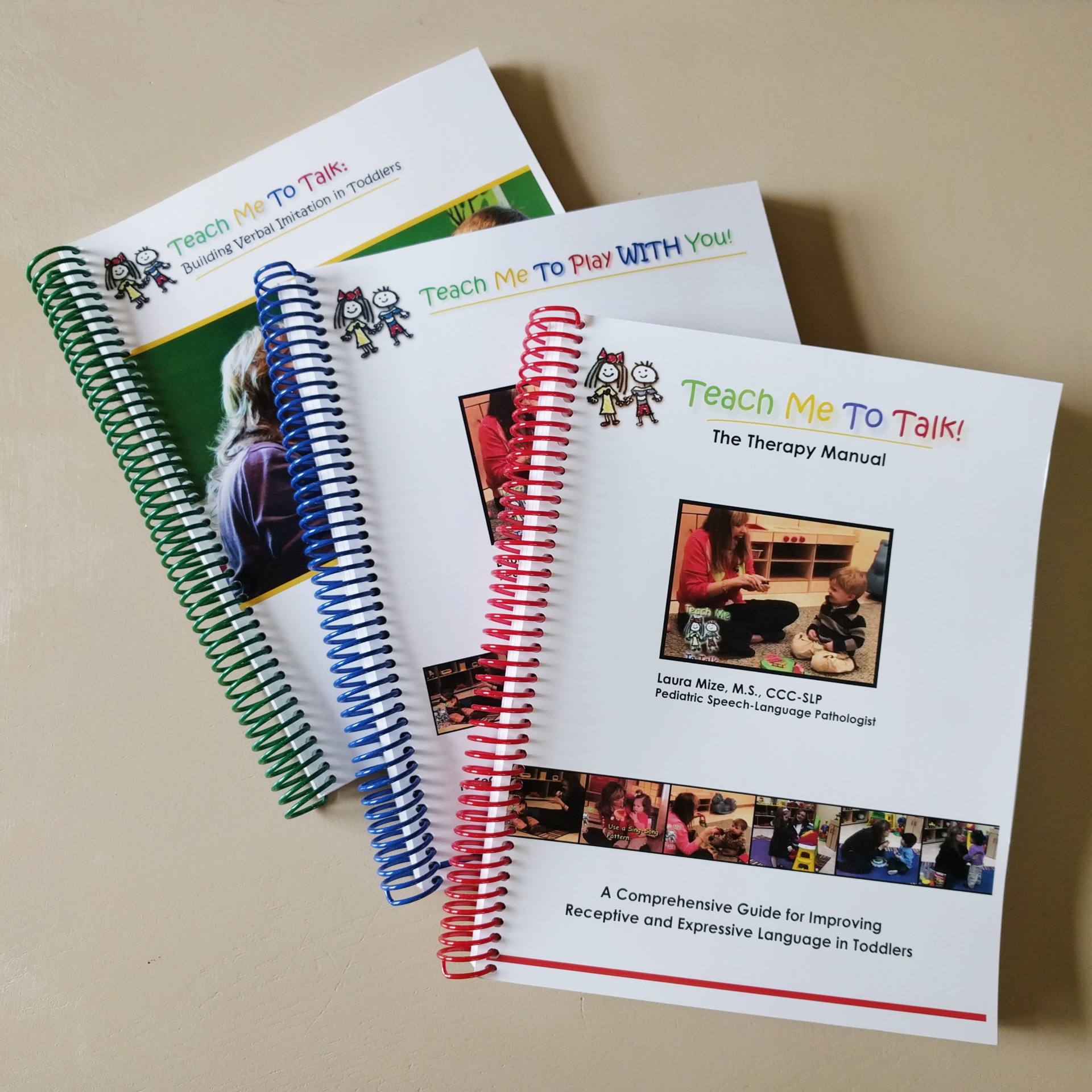
Got some lovely mail yesterday! I was just heading out the door to a meeting for one of my clients (who I was thinking about when ordering these books) and I was so excited to open the box that I chucked it in the car to bring along with me. Of course meeting + picking up my kids swallowed any free time I might have had to really look at them, but that's life. And I'm doing it now! I've been listening to Teach Me To Talk's podcast for a while now and I can't wait to crack into these great resources!
Late Talkers
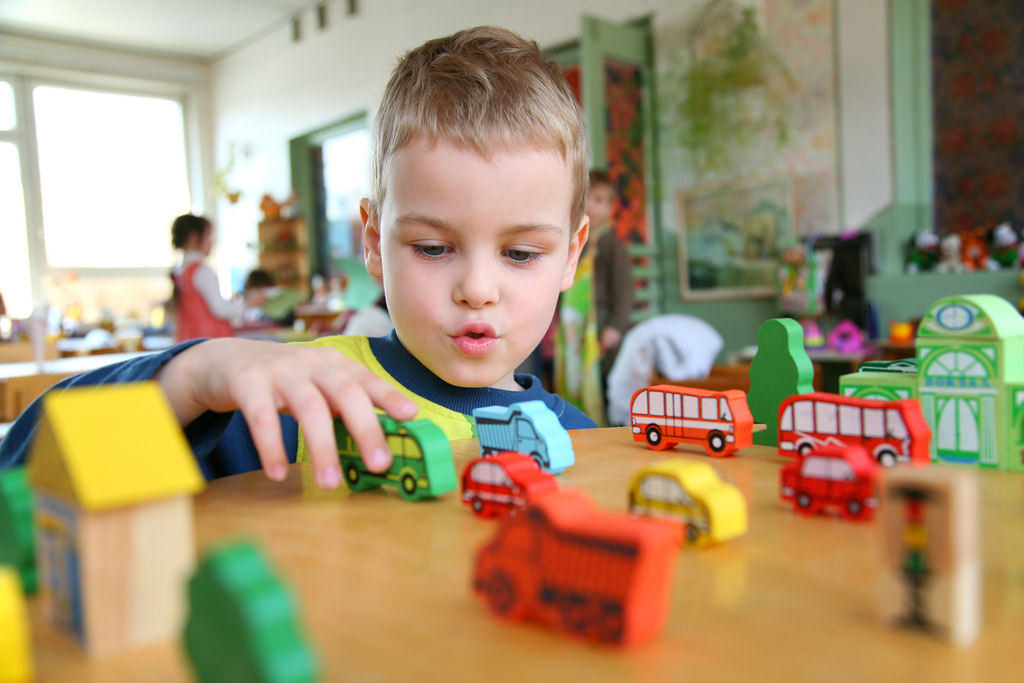
Is your toddler not talking yet? Does s/he babble and coo and squeal and holler? Or is s/he quieter?
Parents of late talkers are usually eagerly anticipating their child's first words. "Getting him/her to talk" is the goal parents most often identify when starting speech therapy with a child whose communication isn't developing on its own. But using words (which typically begins around the first birthday) is not where communication begins. In fact, communication has been developing for the entire first year, and one of the foundational skills before we hear kids start to talk is we hear them becoming NOISY.
Learning to vocalize (meaning making sounds with your voice) is something kids do well before we hear them using words. They may grunt or shout and point at something they see (hoping to direct our attention), they may babble ("babababa" or "mamama" are common), or they may use "jargon" (strings of sounds that we can't understand as meaningful words). Children need to learn to use their voices with purpose and control before they can organize themselves to try out meaningful words like "mama" or "ball." So before we can jump into teaching words, we need to get them making noise!
Here are some great ideas for working more vocalization into your child's routine:
- Get moving! Kids find it easier to vocalize when their bodies are in motion. Run, jump, swing, or bounce around while making sounds with your child.
- Model sound effects often. When playing together, make the cars go "vrrrrrooom!" and the animals/babies slurp/smack their lips as they eat. Say "wheeee!" going down the slide. Say "mmmm!" when food is yummy. Celebrate everything with "yay!" Be creative!
- Play with sound-amplifying toys and household items and experiment with your voice as it echoes through the toy (e.g., cardboard tube, bucket, $1 "echo" microphones from the dollar store, etc). Encourage your child to try it, too.
- Play games and sing songs with animal noises or other sound effects (e.g., here comes the monster → "AAAAH!")
- Go to a large space with an echo and vocalize in there (e.g., empty garage)
- Try having everyone in a large group talk, laugh, or sing all at the same time with the child present - this "crowd noise" sometimes helps the child organize his/herself for joining in.
(Adapted from the work of Laura Mize of Teachmetotalk.com: https://teachmetotalk.com/2016/05/13/286-286-11-skills-toddlers-use-before-words-emerge-8-vocalizes-purposefully/)
Amazing Things Happen (Animation)
This is a wonderful animation about Autism Spectrum Disorder - have a watch!
Screen Time

Screens! We are all hooked on them. You are looking at one right now, reading this!
Our kids are looking at screens more these days than ever before. So how can we make sure this screen time is healthy? And what do we need to know about how screen time affects language development?
Here's what we know: children learn language through interaction with other people. Full stop. So any time a child is spending passively watching something on a screen, s/he is not talking to anyone, hearing anyone else talk, or practicing interaction skills. A child with a screen in front of him/her will usually be silently playing or watching instead of talking to his/her parents, and parents may be less inclined to speak to a child who is completely engrossed in a game or video. This means that screen time is replacing interaction time (that's language-learning time)! This is a problem. Research is showing that kids who watch screens at earlier ages (before 12 months) and for longer times each day (over 2 hours per day) are far more likely to exhibit language delays.
So what do we do?
- Limit screen time. It is recommended that kids under 2 years of age have no screen time at all, and those over 2 have less than 2 hours per day.
- Join in and make screen time interactive. When you're watching a movie together, you can pause it frequently and talk about what's happening with the characters. When you're playing a video game together, you can ask questions, make predictions, and talk about strategies and outcomes. If you can be present during screen time and keep the language flowing, it won't be passive and it won't be happening at the expense of interaction.
- Forgive ourselves. We are all trying our best and, yes, sometimes we need a little break to shower or drink a glass of wine and screen time is how we make this happen. It's not something to beat yourself up about. Just try to keep it healthy.
Screen time: in moderation and with more interaction. We can do this!
Sign Language
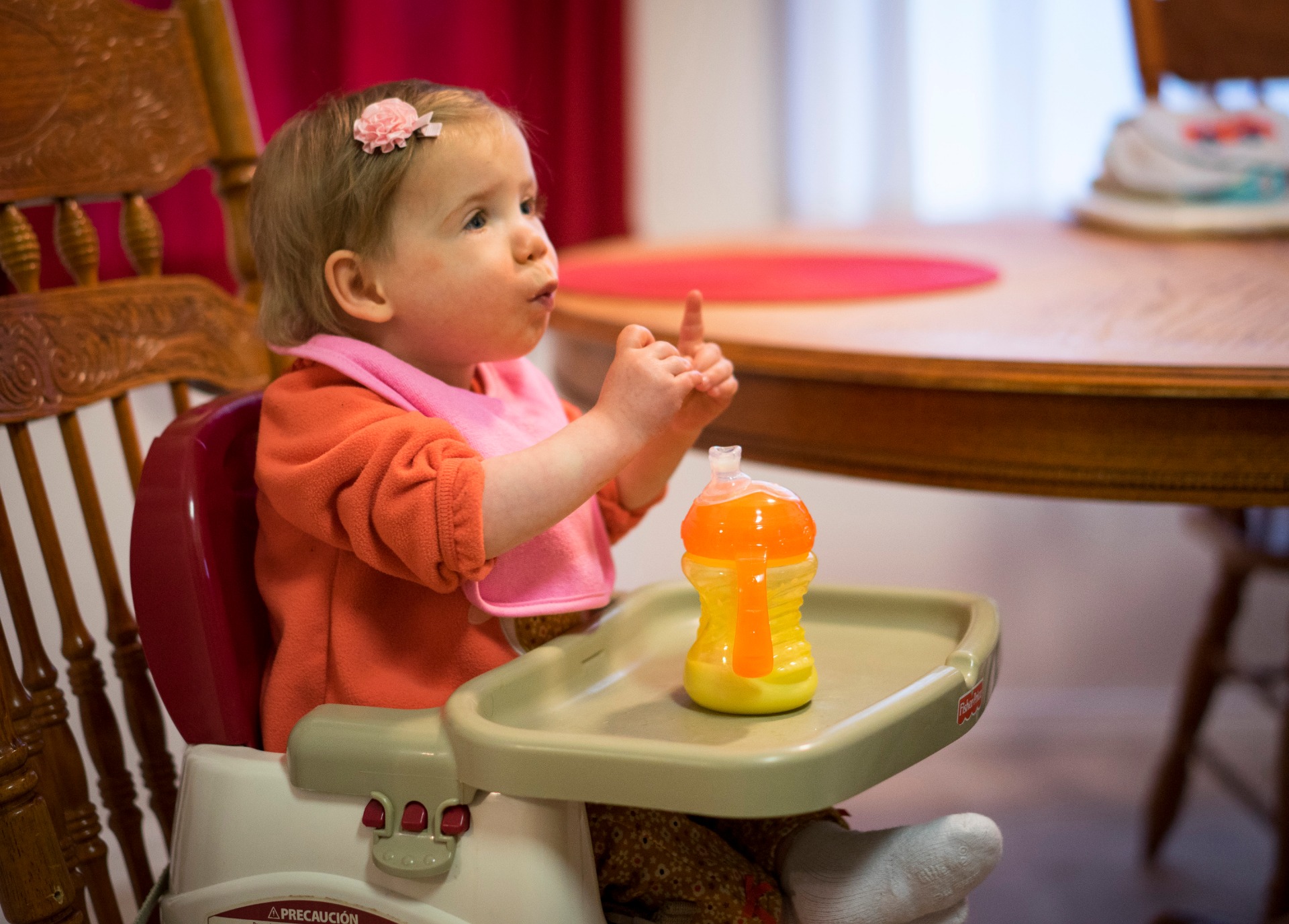
Why use sign language with (hearing) babies and toddlers? Won't signing discourage babies from learning to talk?
The answer: Actually, it's the exact opposite. Research shows that pairing spoken words with signs actually helps babies' language develop FASTER! Babies can coordinate their little hands at an earlier age than they can use their mouths to articulate sounds and words, so signing is actually easier for a baby's developing brain and body!
What else is awesome about signing, you ask?
- It improves joint attention (meaning: you and I paying attention to something, together)
- It helps kids learn to imitate (a critical foundation skill for language development)
- It supports the development of symbolic thought (note: words are also symbols)
- It teaches kids that they can influence their own environment to get their needs met (this motivates more intentional communication)
- It gives kids' brains more information than words alone (visual + auditory vs. auditory only)
- Signs can be held longer if the child needs more time to process (this supports working memory)
- It reduces frustration for both parents and children (fewer tantrums? yes please!)
These smart little signers also learn very quickly - once they are ready and able - that (a) it's more efficient to simply say the word and (b) more people will understand spoken words than signs. They really don't get stuck in the land of signing forever. Think of it as a bridge or a tool used to help your child get to words.
I encourage you to try out signing with your baby! You can check out https://weehands.com/dictionary.html for a visual signing dictionary for many common baby signs.
Following Your Child's Lead
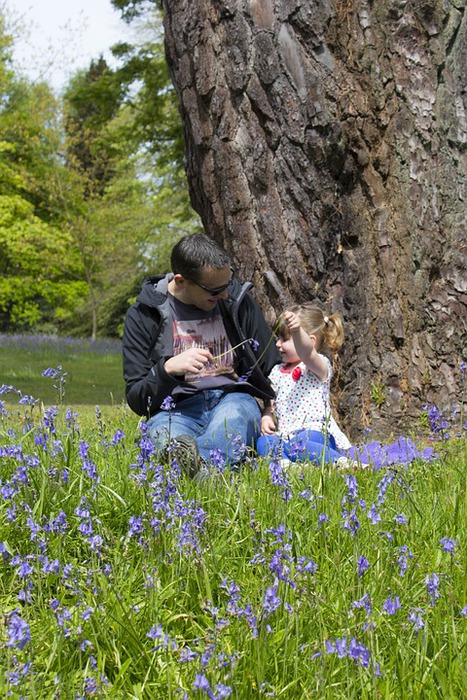
One of my favourite, easy-to-use strategies for parents of late talkers is the idea of following the child's lead during play. Essentially, this means talking about what s/he is looking at, and shifting when the child shifts. So if you are playing with a ball and you are labeling "ball!" and "roll the ball!" and "throw it!" and all that great language about ball games, then your child moves on to grabbing for some nearby dinosaur toys - you shift straight into talking about dinosaurs. You abandon the ball and move along with your child's changing attention to the dinosaurs ("roar!" and "T-rex is coming!" and "He's hungry, look out!"). What this does is MATCHES the words your child is hearing with the experiences s/he is having. If you try to keep the ball game going with "hey, look, I'm bouncing the ball! Over here!" and the child has a velociraptor in his/her hands, what you have is a (potentially confusing) mis-match. The child is looking at a dinosaur but hearing "ball."
In contrast, hearing the word that MATCHES for the toy in his/her hands or whatever s/he is looking at builds a meaningful association between the word and the real thing. This is what language learning is all about!
So try paying attention to how you typically use words with your toddler - are you matching your language to his/her experiences, or are you calling him/her away from something else to pay attention to what you're offering? It's easy to fall into the habit of trying to engage your child in something you've chosen yourself, especially when it may not be obvious that your child is truly engaged in what s/he may be looking at (thinking "oh, he's just playing with the velcro on his shoe... "). I tell ya, toddlers play with and explore pretty much anything they can get their hands on. So tune in and talk to them about it! (Even the shoe velcro, the bird poop on the sidewalk, and the wheels on the bottom of your office chair. It's all fair game.)
Disclaimer: I do not mean to endorse letting your children do anything they please, of course. Safety rules still apply!
Mystery Bag
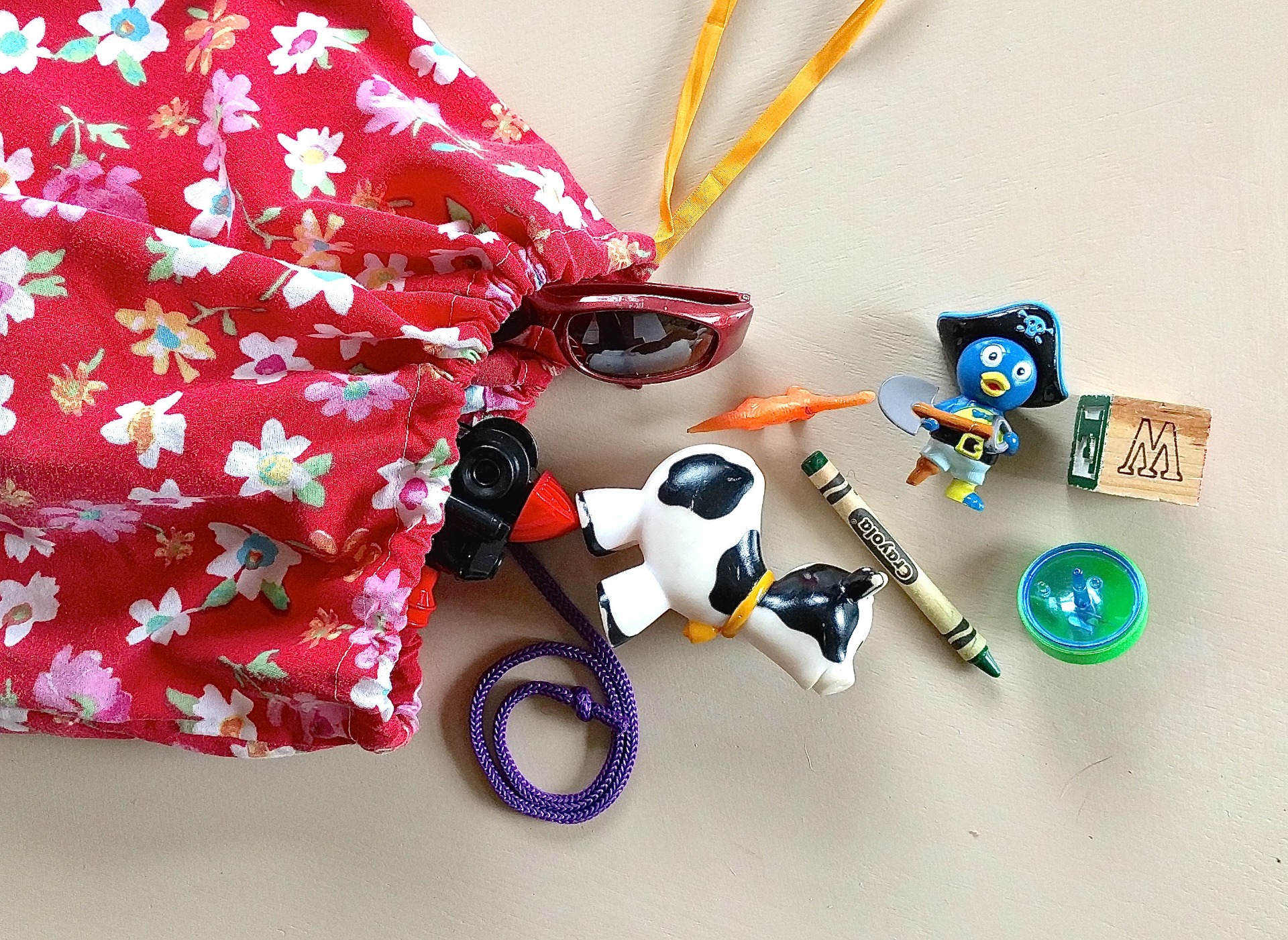
Here's one of my favourite therapy materials: a mystery bag!
A simple drawstring bag full of random small toys/objects can be used in so many ways to teach words and sounds. Here are some therapy goals I've worked on (or can think of targeting) using my trusty mystery bag:
- turn-taking ("my turn!" and/or "your turn!")
- joint attention (building anticipation by reaching in the bag without looking, exaggerating my "I wonder what it is" face, bringing out an object and then exclaiming in surprise what I've found, holding it near my eyes to make shifting attention easy) - kids think this is really fun!
- the /f/ sound in structured sentences ("I found a ____")
- the /s/ sound and/or /fl/ blend in a "will it sink or float?" game (with a bin or sink full of water) - best if you make sure all objects are water resistant before beginning, of course
- subject-verb-object sentence structure ("I found a ____", or "It's a ____", or "I have a ____")
- word-finding (working on naming each object, with meaningful hints given to help a child find the right word)
- vocabulary building (talking about the features, functions, or categories of each object we pull out) - this is fun in the context of making guesses about what you have in your hand before looking at it (e.g., "it feels soft... it feels round... it might be a pom pom")
- sequencing (pulling out two or more objects per turn and saying "first I found a ____, then I found a ____")
- pairing language goals with a fine motor activity (pulling out an object, naming it, then setting it up on a spot outside and squirting it with a spray bottle or shooting it with a nerf gun)
Can you think of any more ways to use a mystery bag to work on speech or language? I love toys or activities you can use multiple ways in therapy!
Reading Beyond the Text
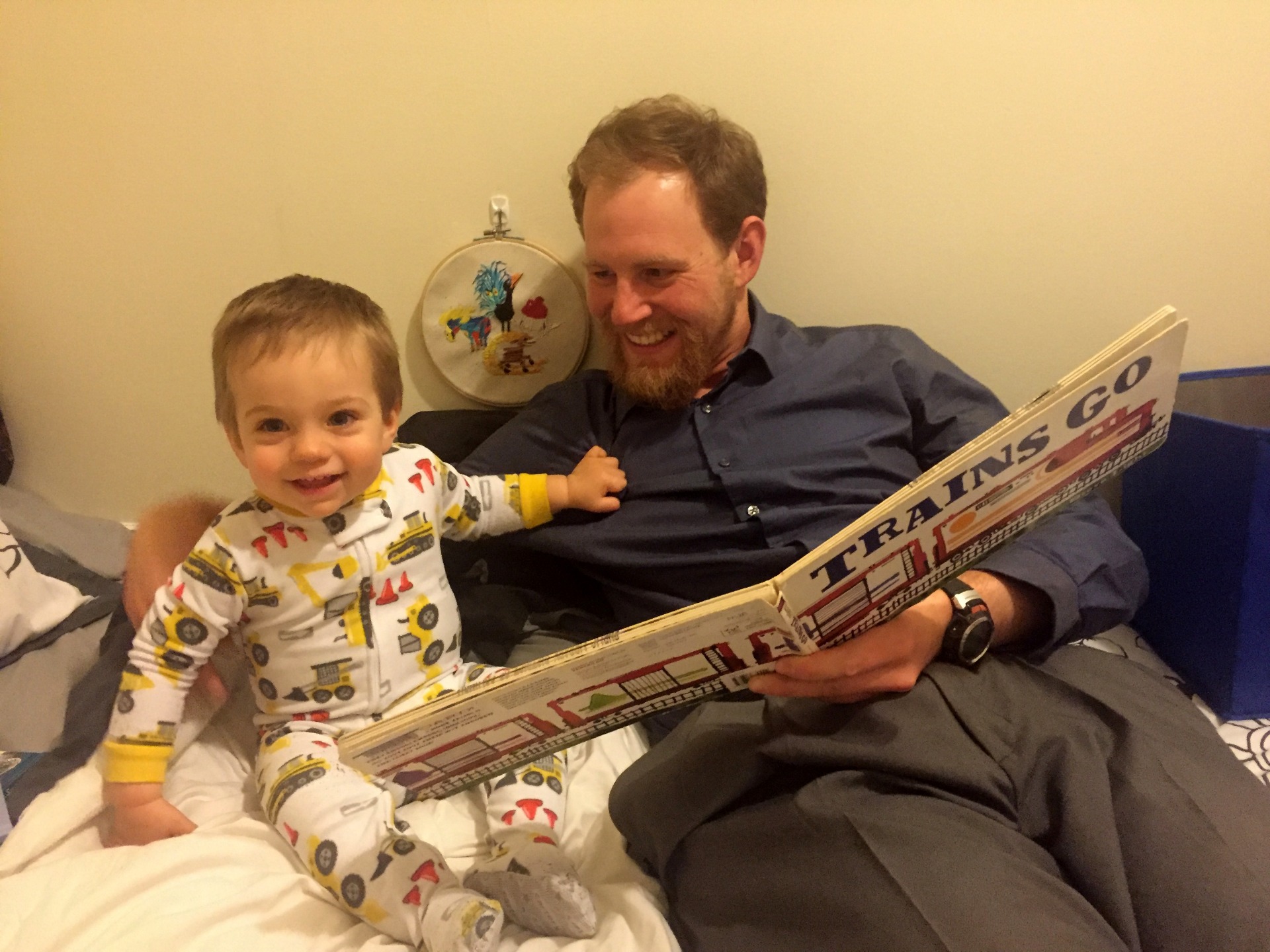
Reading: it's about much more than the words on the page!
Children's books are a rich source of new vocabulary and language learning opportunities that only begins with the written text. So here's my suggestion: when you read to your child, read BEYOND the text. Reading beyond the text means talking about the pictures, asking questions, making predictions, relating the events to your own experiences, remembering sequences, finding patterns, pointing out your favourite things, calling attention to the text itself, and talking about how books work (which way is up, which direction you move, how many pages to turn, etc). You can honestly have an entire conversation just based on a single page!
Depending on your child's age and language level, this may mean pointing to the pictures and saying one or two words at a time ("ball!" or "blue car!") or it may mean having more extensive, logical conversations with your child where you ask those more abstract, thinking questions ("where do you think she will sail her boat?" or "why did the kids all put on monster costumes?").
So instead of being a book reader, try out being a book explorer - there is so much to talk about and so much to learn!
First Three Months
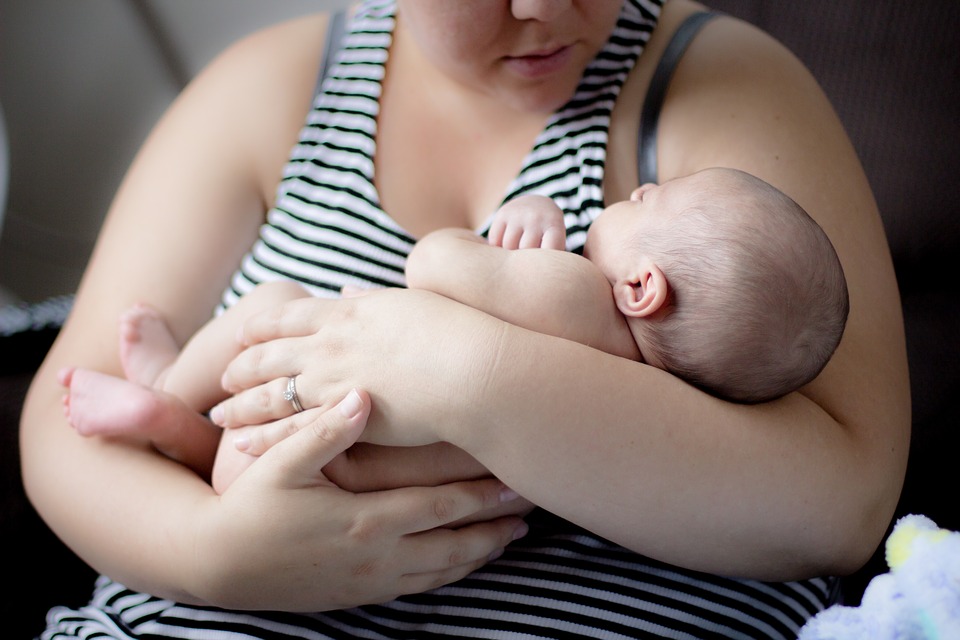
Did you know language development begins way before those first words emerge around 12 months? Even in a baby's first three months of life, the foundations for language learning are being established.about new ideas and reinforce my knowledge while I drive to/from wherever my kids need to go or while out on a walk. It's pretty brilliant.
Between birth and 3 months, it's typical to see your baby:
- startling to sounds
- quieting or smiling when spoken to
- recognizing your voice (and quieting to it if s/he is crying)
- increasing or decreasing sucking behaviour in response to sound
- making pleasure sounds (cooing)
- crying differently for different needs
- smiling when s/he sees you
(source: https://www.asha.org/public/speech/development/01/)
At this young age, your baby is already listening to what you say and soaking up his/her native language. So talk to your baby about what you are doing, where you are going, and what you are seeing throughout the day. As I often tell parents: be the sports commentator in your own daily life. As silly as it might feel at times ("Mama's chopping the onion... now she's putting the onion in the pan! Here comes the oil. Oh, it's starting to sizzle!") this is laying a strong foundation for your baby to learn language. So give it a try: talk your baby through the steps of a diaper change, or about the laundry you're folding. The best part is: no one's going to judge you for sounding goofy.
Teach Me to Talk
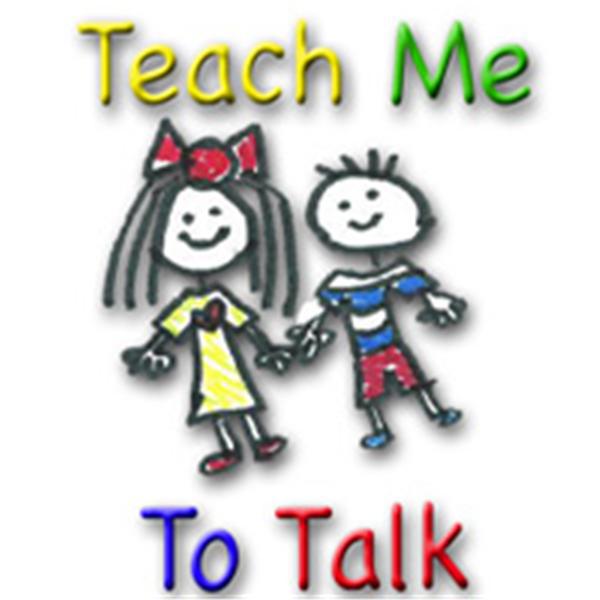
Are you an auditory learner? I definitely am. Because of this, I absolutely love listening to podcasts - especially ones about speech and language stuff, because I can learn about new ideas and reinforce my knowledge while I drive to/from wherever my kids need to go or while out on a walk. It's pretty brilliant.
One of my go-to SLP podcasts is called "Teach Me To Talk" with Laura Mize, an SLP in the US who works in early intervention. She's got loads of practical and excellent tips about how to help toddlers with language learning. I appreciate that she tailors the info for both therapists AND parents, so it's not highly technical. I'd definitely recommend parents of late talkers check it out!
The podcast has been going since 2008 so there is a huge library of stuff to listen to. It's truly been an excellent resource, and I found it easily by searching within my podcast app ("Podcast Addict" on Android). Check it out!
Spring Break
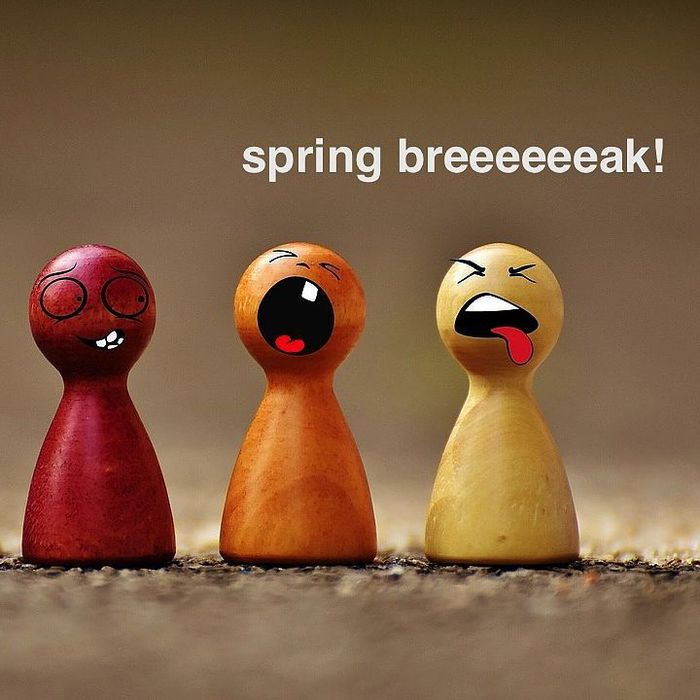
As a kid, spring break was always an exciting time for me; but as a parent (especially now that it's a full two weeks long), I find it a bit challenging to find things to keep us occupied and not driving each other bonkers.
Today, my kindergartener and I will be busting out the ingredients to make a much-needed fresh batch of playdough. I've also been keeping a list of activity ideas and games we could play. What's your go-to rainy day or spring break activity when you're feeling squirrelly? Any educational or language-based games to recommend? A great go-to game I've been using in therapy is the Cat In The Hat "I Can Do That!" game. Look it up! You can work on so many great language goals using this game. Sentence structure, memory, sequencing, prepositions, and verbs! And because it's all about getting up and doing stuff, it's perfect for those wiggly kids who need to move! (I happen to be a parent to one of those, myself.)
Typical Language Development
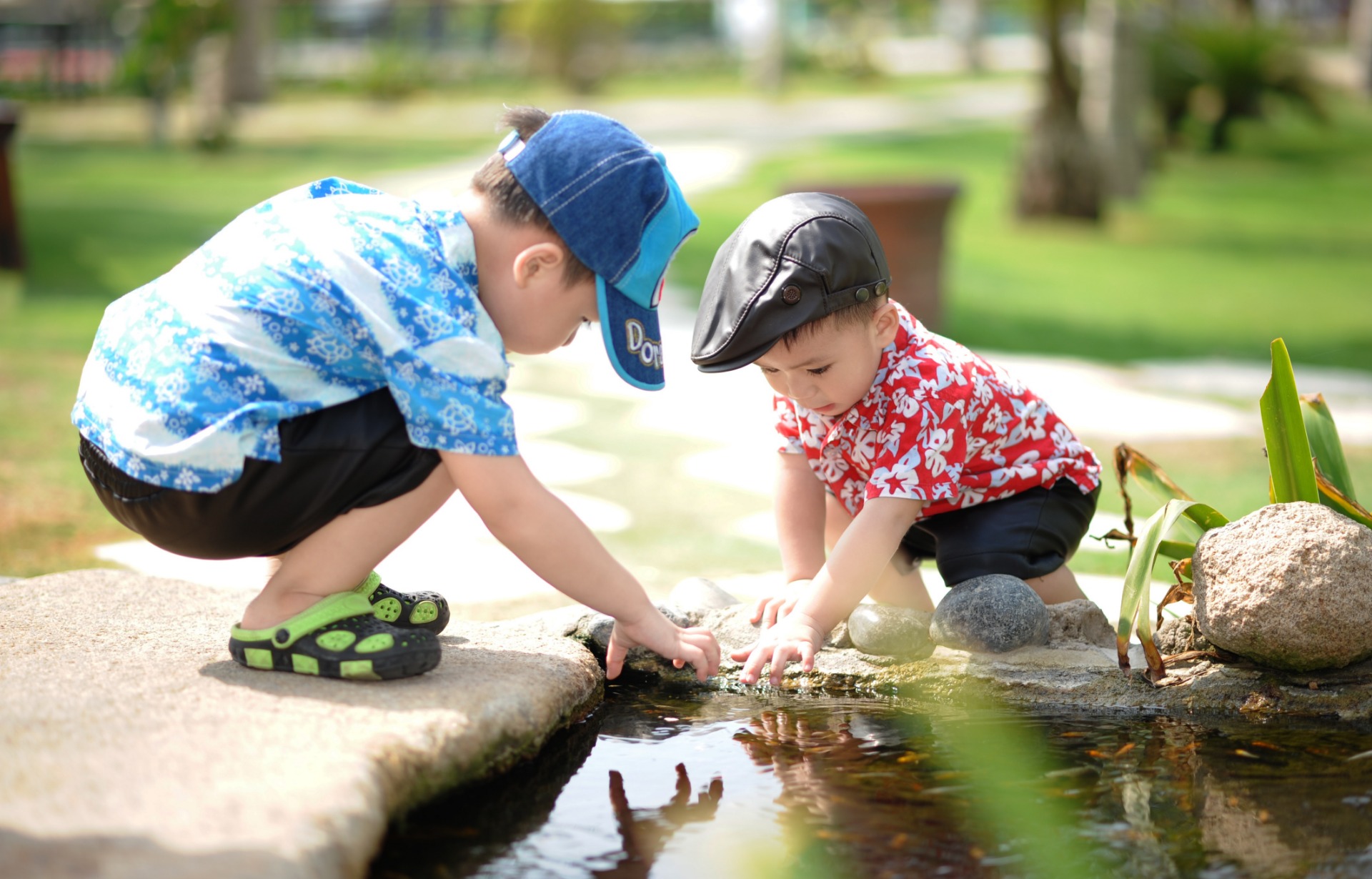
What does typical language development look like in a toddler?
As a general rule, we look for these milestones:
- By 12 months: using 2-6 single words (e.g., "milk", "dog")
- By 18 months: using about 50 words (vocabulary "explosion" occurs)
- By 24 months: using 200-300 words and starting to use 2 words together (e.g., "more milk", "mommy up")
It goes without saying that these are averages and there is a wide range of normal for toddlers acquiring language. So there is no need to panic if your child is slightly behind these benchmarks (as long as there are no concerns in other areas, such as physical growth, social communication, fine/gross motor skills, feeding, hearing, or behaviour).
If you are concerned your child isn't on track with his/her peers or is far behind these milestones (or something about his/her communication is just niggling at you and you would like a professional opinion) feel free to give me a call to talk about it. I offer a free 15 minute phone consultation to sort this out with you.
Call 250-588-8747 or send me an email at jana@sayitslp.com. I can help you figure this out!
The Importance of PLAY
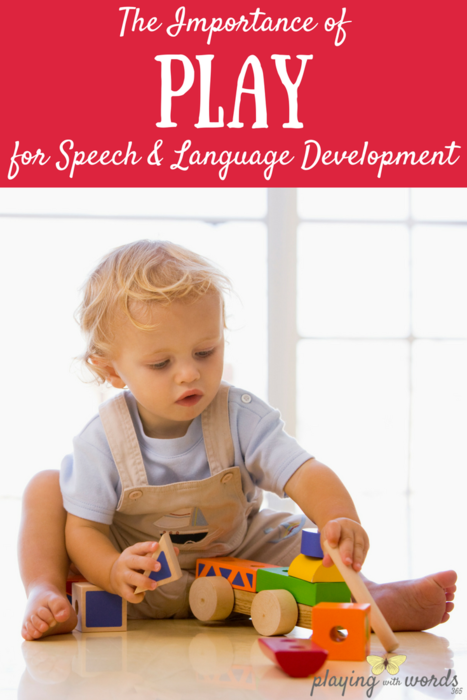
PLAY. Play is how children learn pretty much everything - especially language. There is so much value in getting down on the floor with your child. Plus it's pretty fun!
https://www.playingwithwords365.com/the-importance-of-play-for-speech-and-language-development/
Introduction
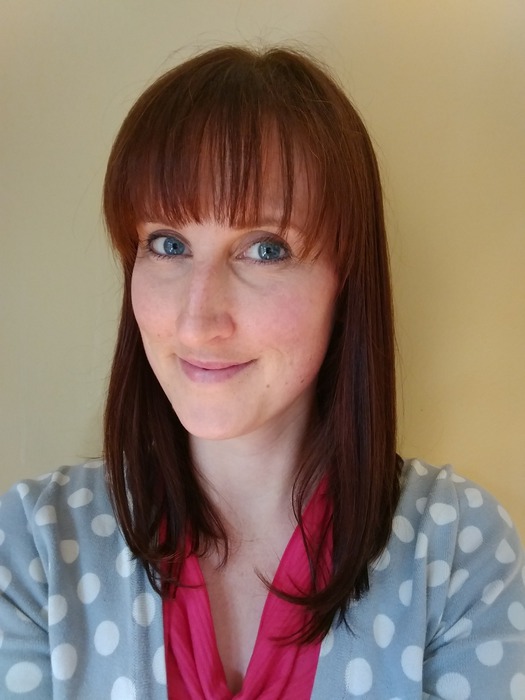
I should introduce myself! My name is Jana O'Connor, and in addition to being a Speech-Language Pathologist (SLP), I'm also a mama to three kiddos (my son is 5 and my identical twin daughters are 3), as well as a knitter, a crafter, and a comedy enthusiast. I started my private practice in November 2016 to let me have a flexible schedule and work at a pace that suits my family and that keeps me sane.
As a parent, I understand how busy life can be and strive to make supporting my clients and their parents to make communication a fun and achievable part of daily activities.
So far, I'm loving this new experience of working in private practice and am enjoying meeting new clients and their parents. Toddlers and preschoolers are fantastic little people and I love helping them learn and see their growing pride about what they can do and say. Communication should be fun!
Hello!
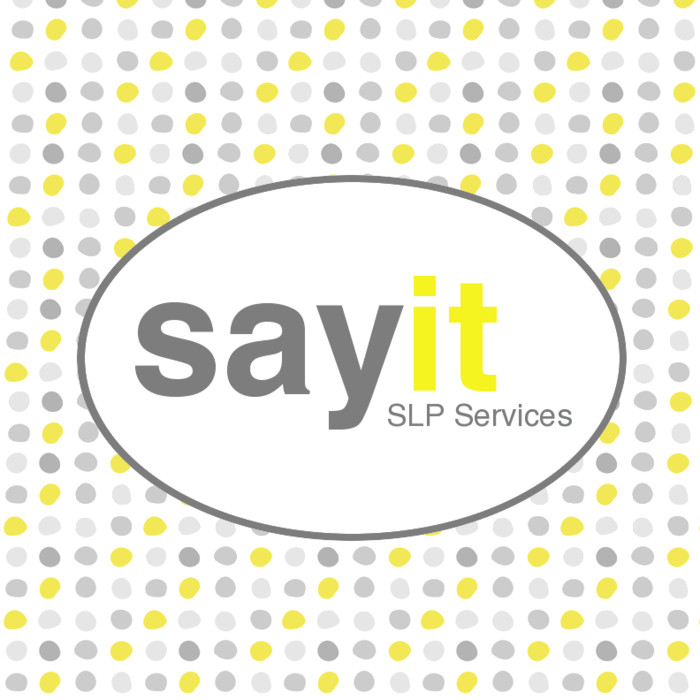
I am happy to announce that I've launched my new Speech-Language Pathology private practice, Say It SLP Services, here in beautiful Victoria! I have availability Tuesdays, Wednesdays, and Thursdays between 9:30am and 2:30pm and will be working primarily with the toddler and preschool population. I have four years of experience diagnosing and treating communication delays and disorders. If you are concerned about your young child's communication skills (late to say words, limited vocabulary, difficulty following directions, frustration related to speaking, stuttering, or unclear speech sounds), please give me a call: 250-588-8747 or email me at jana@sayitslp.com.

